Step-by-Step Guide to Building Your First AI Agent (No Code)
- AI AppAgents Editorial Team
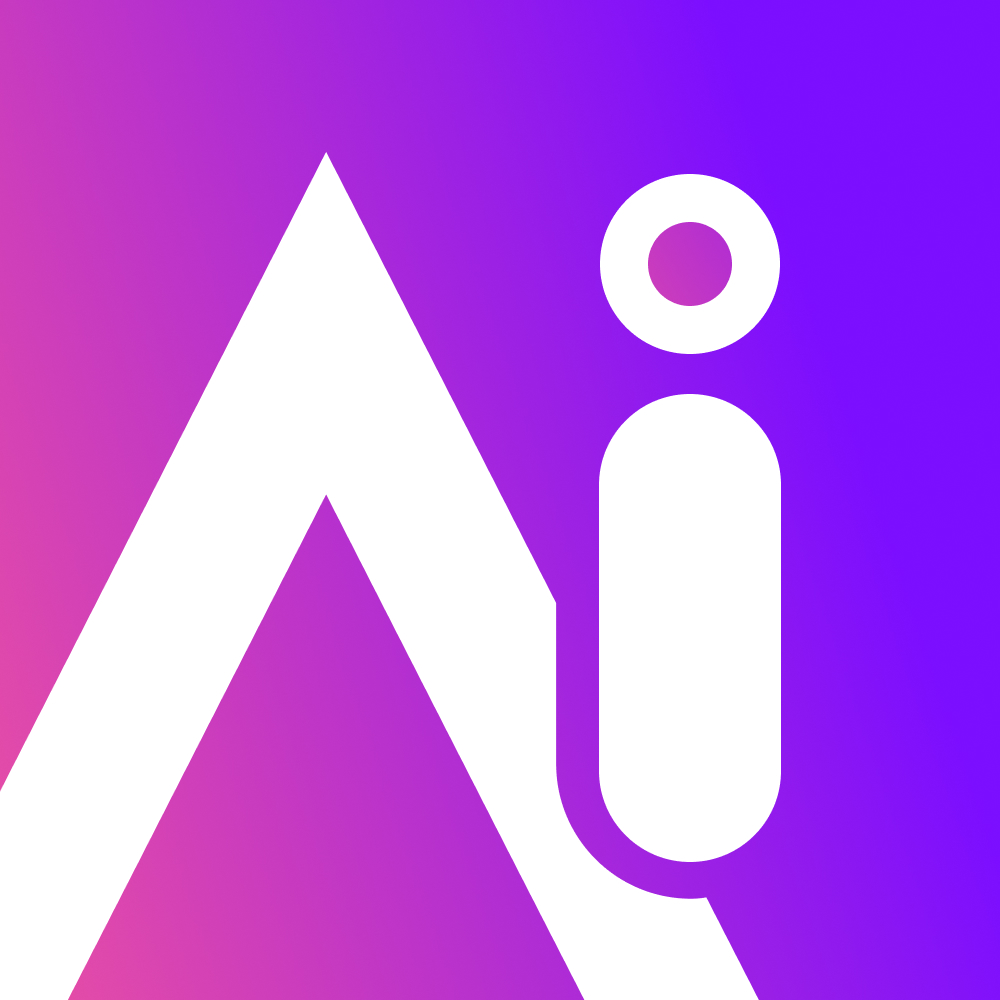
- 2 days ago
- 5 min read
Updated: 2 hours ago
From a futuristic idea, artificial intelligence (AI) has developed into a commonplace tool that powers personal assistants, chatbots, content creators, and recommendation systems. AI agents are becoming indispensable for automating repetitive tasks, increasing productivity, and providing better experiences, regardless of whether you are an entrepreneur, student, or business professional.
The finest aspect? To get started, you don't need to know how to code. No-code platforms make it easy, quick, and affordable to create an AI agent. You can create your first AI agent from scratch without writing a single line of code by following the comprehensive, step-by-step instructions in this AI development guide.
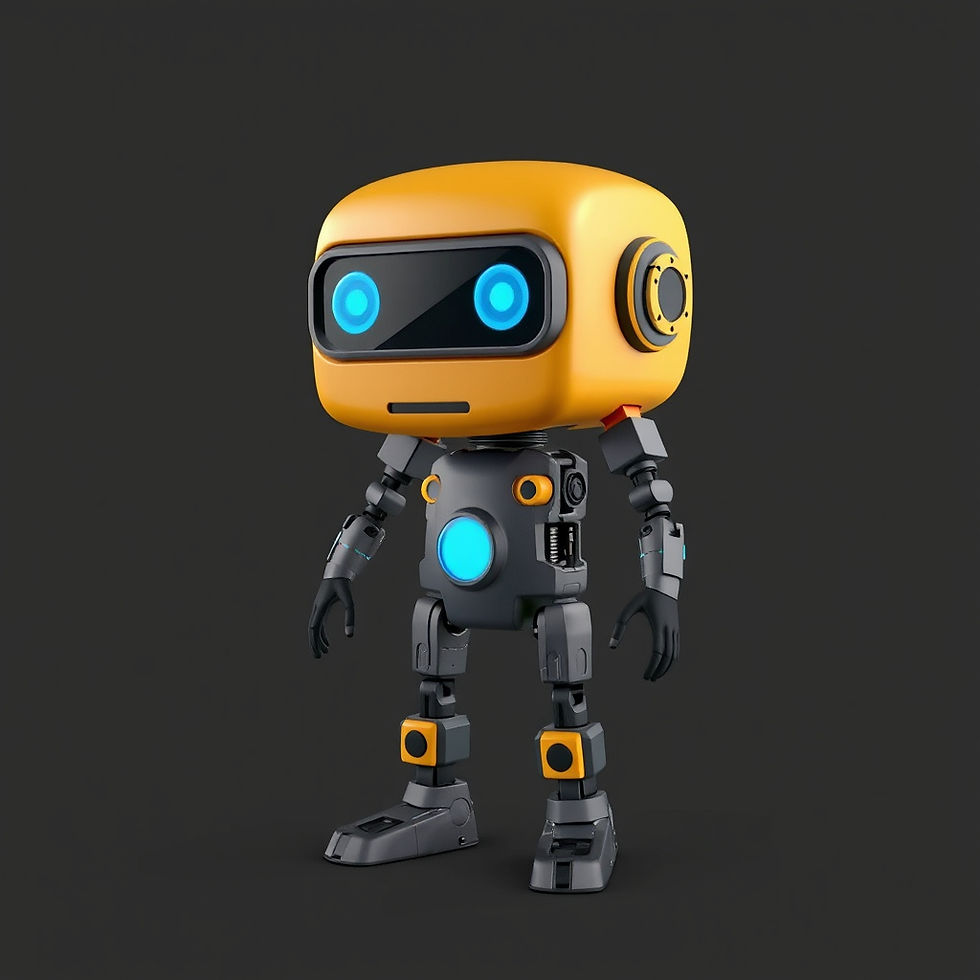
Knowing AI Agents: What They Are and How They Work
Understanding the idea of an AI agent is essential before construction begins. Fundamentally, an artificial intelligence (AI) agent is a system that has the ability to sense its surroundings, make decisions, and act to accomplish a particular objective. AI agents can adapt, learn from data, and react intelligently to novel circumstances, in contrast to traditional software that only executes pre-programmed instructions.
AI Agent Examples in Action:
Chatbots for customer service can answer questions around-the-clock, suggest products, and lighten the workload for human agents.
Content generators: Automatically create blogs, marketing emails, and social media posts.
Workflow optimizers: Automate repetitive tasks in a variety of tools, such as project management apps, spreadsheets, and email.
Understanding the function of AI agents helps in planning and designing workflow logic, data inputs, and user interactions, which are critical when using no-code platforms.
Why Create AI Agents Without Writing Any Code? Key
Advantages Described
Programming, APIs, and machine learning models are among the technical skills needed for traditional AI development. But these obstacles are removed by no-code platforms, which make it possible for anybody to create AI agents. The following explains why no-code development is becoming more and more popular:
Usability for Novices and Non-Technical UsersVisual interaction is the goal of no-code platforms. Non-programmers can create working AI agents with drag-and-drop editors, prebuilt connectors, and templates.
Quick Deployment: Concept to Prototype RapidlyWith no-code tools, you can go from idea to functional prototype in a matter of hours as opposed to weeks.
Cost-Effectiveness: Lower Development CostsIt can be costly to maintain custom infrastructure or hire AI developers. Costs are significantly reduced by no-code solutions, which provide free or reasonably priced plans for testing.
Smooth Integration with Well-Known AppsNo-code Custom API development is not necessary because AI agents can readily connect to programs like Slack, Gmail, Google Sheets, or Notion.
Adaptability and ExpandabilityBegin with a single workflow (such as a chatbot for frequently asked questions) and progressively increase the capabilities of your AI agent. Scaling is made easy by no-code platforms, which eliminate the need to rewrite intricate code.
Streamlined Updating and MaintenanceChanging visual workflows is all that is required to update and iterate on an AI agent. Improvements can be made by non-technical users without relying on developers.
Crucial No-Code Platforms for AI Agent Development
The first step in creating a successful AI agent is selecting the appropriate platform. Depending on your workflow requirements, each platform offers different features.
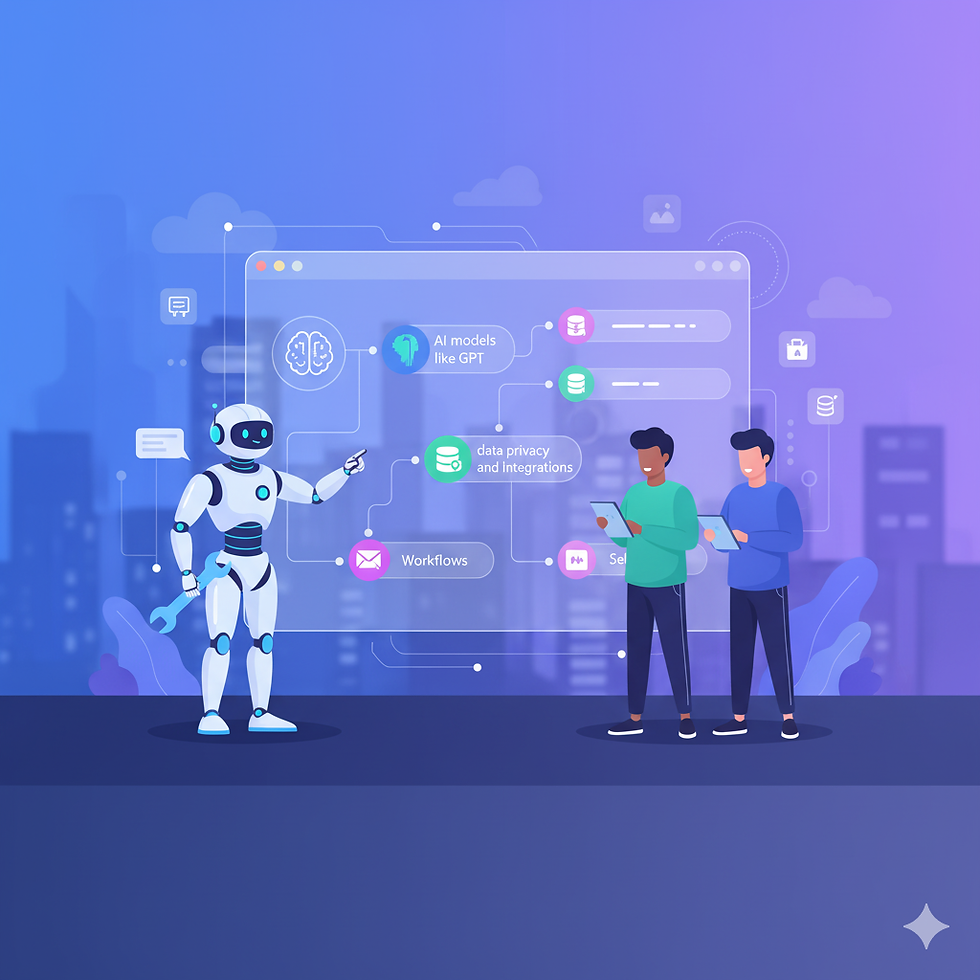
n8n: Advanced Automation with Open-Source Flexibility Why go with n8n? Gives complete control over data privacy, integrations, and workflows.Important features: Integration with AI models such as GPT, self-hosting capabilities, and a visual workflow editor.Ideal for: Users desiring a high degree of personalization and command.Use cases: Automated notifications, AI decision-making, and workflow automation.
Zapier: Easy Setup for Novices Why pick Zapier? Prebuilt integrations for thousands of apps and an intuitive interface.Key features: Templates, automated triggers, drag-and-drop builder.Ideal for: Beginners looking for fast deployment.Use cases: Automating simple AI-driven tasks like email replies, posting social media content, or chatbots.
Make (Integromat): Robust Automation for Advanced Workflows Why use Make? Manages multi-step, conditional workflows visually.Key features: Multi-app integrations, branching logic, enhanced error handling.Ideal for: Companies with intricate automation needs.Use cases: Reporting, analytics dashboards, customer engagement.
Flowise: AI-Focused Platform for Chatbots and ApplicationsWhy use Flowise? Supports LLMs such as GPT-4.Key features: Prebuilt templates, drag-and-drop AI workflow builder.Ideal for: AI-first app and chatbot creators.Use cases: Chatbots, recommendation systems, content automation.
Langflow: Low-Code AI Agent Development at Lightning SpeedWhy use Langflow? Visual design for building AI agents rapidly.Key features: LLM integration, API connectors, production-ready workflows.Ideal for: Users looking for timely and efficient deployment.Use cases: Analytics dashboards, personal assistants, workflow automation.
Step-by-Step Process to Build Your First AI Agent (No Code)
After selecting your no-code platform, the next step is to design, test, and deploy your AI agent.
Step 1: Define the Purpose of Your AI Agent
Questions to ask:
What am I trying to address?
Who will use this AI agent?
What is the expected output or action?
Examples:
Customer support (FAQs, scheduling, order updates).
Internal automation (reports, reminders).
Content creation (captions, blog outlines).
Step 2: Join Up Data Sources
Identify where the information lives (Google Sheets, CRMs, databases).
Connect using connectors or APIs.
Test data flow.
Tips: Use clean data, update in real-time, avoid hardcoding.
Step 3: Incorporate an AI Model
Select an AI model (e.g., GPT-4).
Configure prompts and rules.
Test responses.
Tips: Use system prompts, refine based on performance, avoid sensitive data.
Step 4: Design Workflows Visually
Define the trigger.
Add AI decision rules.
Connect actions.
Use conditional branches.
Step 5: Test and Validate Your AI Agent
Run multiple queries.
Test edge cases.
Confirm data accuracy.
Refine workflows and prompts.
Step 6: Deploy Across Channels
Choose the deployment platform.
Set permissions.
Publish workflows.
Track issues on launch.
Step 7: Track Performance and Iterate Frequently
Monitor response time, accuracy, satisfaction.
Identify weak spots.
Refine prompts and workflows.
Add features incrementally.
Real-World Applications for No-Code AI Agents
E-Commerce: Chatbots for FAQs, product suggestions → boosts conversions.
Content Marketing: Automated captions, blogs, emails → saves time.
Operations: Reporting and reminders → improves productivity.
Education: AI tutors → enhances engagement and personalization.
Healthcare: Scheduling, triage → saves overhead, improves experience.
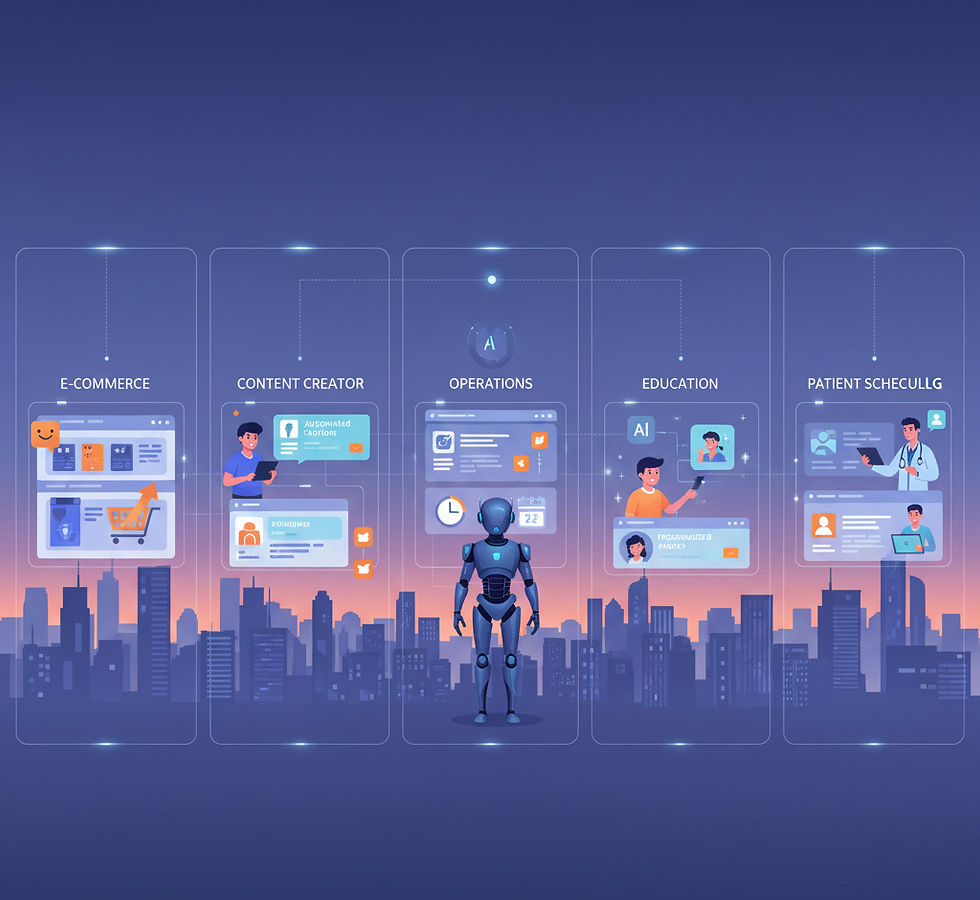
Best Practices for Building No-Code AI Agents
Start small: Focus on one task.
Prioritize data quality.
Keep humans in the loop.
Ensure privacy and security.
Iterate frequently.
Common Mistakes to Avoid
Overcomplicating workflows too early.
Expecting 100% accuracy.
Ignoring user feedback.
Skipping integration tests.
Neglecting security and privacy.
Final Thoughts: Your First Step Towards Practical AI Development
Developing an AI agent no longer needs coding expertise. Anyone can automate tasks, enhance workflows, and generate value through no-code agents.
This guide covered:
Defining purpose.
Choosing a platform.
Connecting data sources.
Integrating AI models.
Designing and testing workflows.
Deploying.
Iterating for improvement.
The future of AI is for everyone. Start small, experiment, and grow — your first no-code AI agent can be the springboard to endless opportunities in automation, customer support, and content generation.
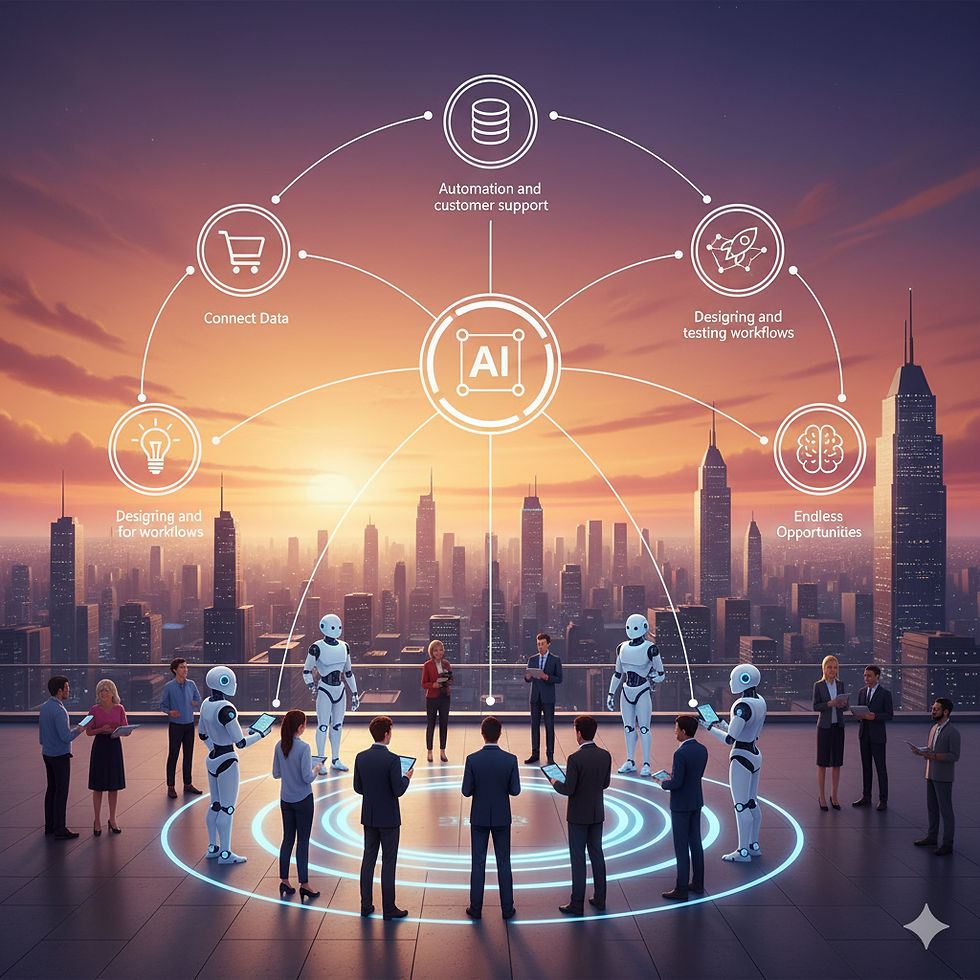
Ready to Bring Your Ideas to Life?
Whether you’re planning a new AI project, need app development, or want to explore automation for your business, AI AppAgents is here to help. Let’s collaborate to build solutions that drive real impact.
Get in touch:
📧 hello@aiappagents.com | 📞 +91 95501 00002
We look forward to hearing from you!



Comments